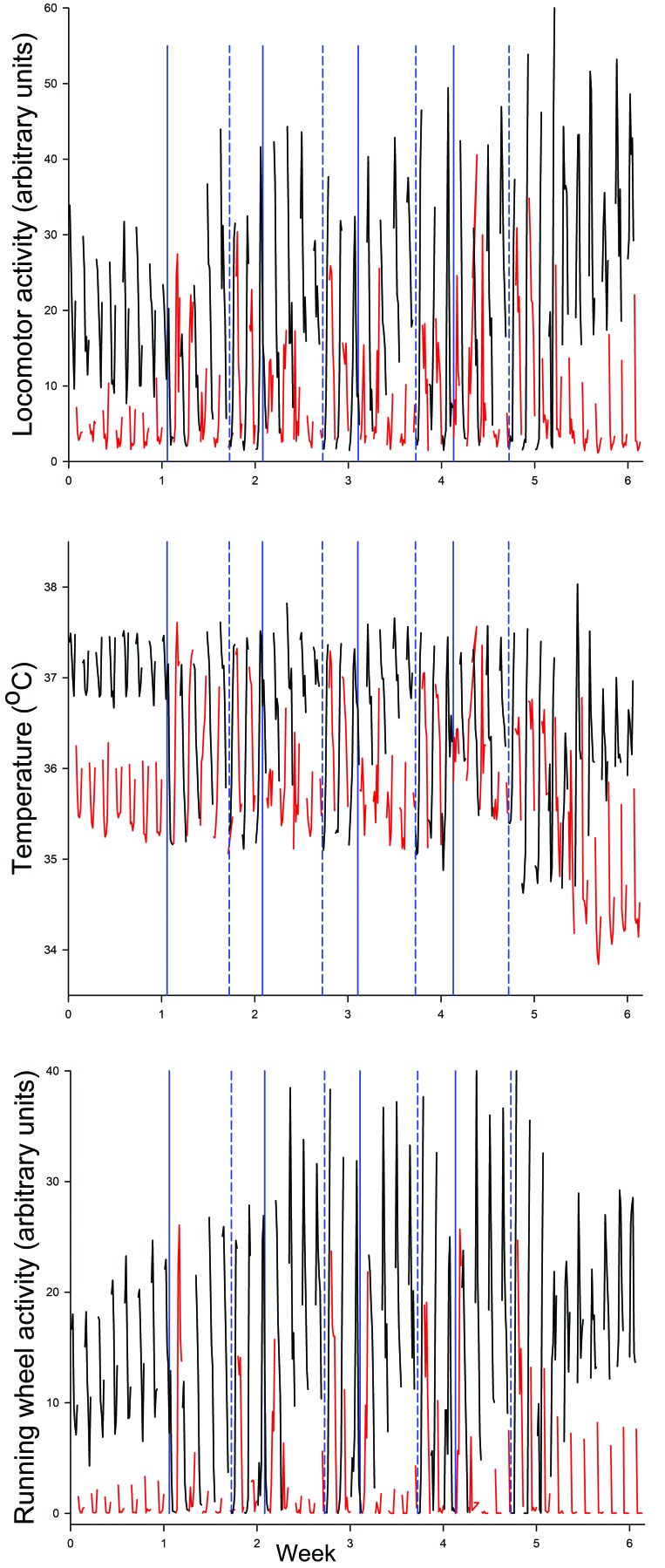Figure 2.
Disruptive effects of repeated diurnal phase shifts. C57BL/6J mice (n = 5) were exposed to 1 wk of a normal 12:12-h LD cycle and then to 4 sequential weeks of diurnal phase shifts (DPS), simulating shift work (SW; see Figure 1 for details). Vertical blue lines denote times of phase advances (solid) and phase delays (dashed). Mice then resumed a stable 12:12-h LD cycle. Core temperature, locomotor activity, and running-wheel activity were recorded continuously for the duration of the study. Values were summarized over 2-h periods and are displayed as mean values obtained when the lights were on (red) and off (black). The data show marked and repeated disruption of normal diurnal patterns of all 3 measures. As compared with the distinct LD separations seen during the baseline and postDPS periods, mice showed disorganized LD differentiation in association with phase advances and delays.

